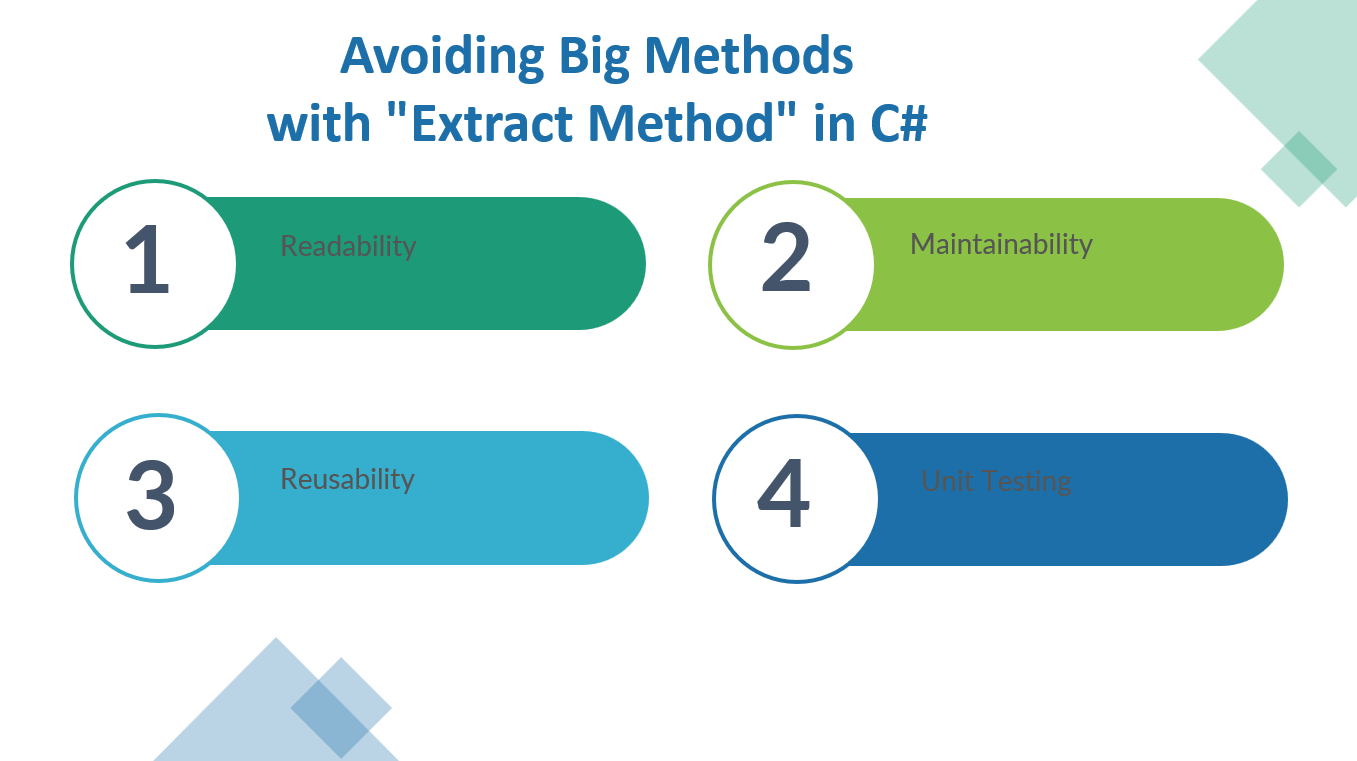Refactoring large methods in C# is crucial to enhancing code readability, maintainability, and overall code quality. Here’s a general approach to refactoring large methods in C#:
- Identify Code Smells: Look for signs of complexity such as long method bodies, nested conditionals, and repetitive code blocks. These are indicators that the method may benefit from refactoring.
- Break Down into Smaller Methods: Identify logical sections within the large method and extract them into smaller, self-contained methods. Each method should ideally perform a single task or have a single responsibility.
- Use Meaningful Method Names: Ensure that the names of the extracted methods accurately describe what they do. This enhances code readability and makes the intent of the code clearer.
- Parameterize: If the extracted methods require input parameters, pass them as arguments to the method. Avoid relying on global variables or state whenever possible to improve encapsulation and reduce dependencies.
- Encapsulate Local Variables: Limit the scope of variables to the smallest possible scope. Declare variables close to where they are used and consider using local variables instead of class-level fields.
- Eliminate Code Duplication: Look for repeated code patterns within the large method and refactor them into separate methods or utilities. Reusing code promotes maintainability and reduces the risk of introducing bugs.
- Use Control Flow Statements Effectively: Simplify nested conditionals and loops by using early returns, guard clauses, and switch statements where appropriate. This improves code readability and reduces cognitive load.
- Apply Design Patterns: Consider applying design patterns such as Strategy, Template Method, or Command to refactor complex logic into more manageable structures.
- Test Thoroughly: As you refactor, ensure that you have a comprehensive suite of unit tests in place to validate the behavior of the refactored code. This helps prevent regressions and ensures that the code functions as expected.
- Refactor Incrementally: Refactor the large method in small, incremental steps rather than attempting to refactor everything at once. This approach minimizes the risk of introducing errors and allows you to validate each change as you go.
By following these steps, you can systematically refactor large methods in C# to improve code maintainability, readability, and overall quality.
Example:
public decimal CalculateNetAmount(SalesInvoice sales)
{
decimal GrossTotal = CalculateItemPrice(sales);
decimal TaxAmount = CalculateTaxAmount(GrossTotal);
decimal Discount = CalculateDiscount(GrossTotal);
decimal NetAmount = GrossTotal + TaxAmount - Discount;
return NetAmount;
}



